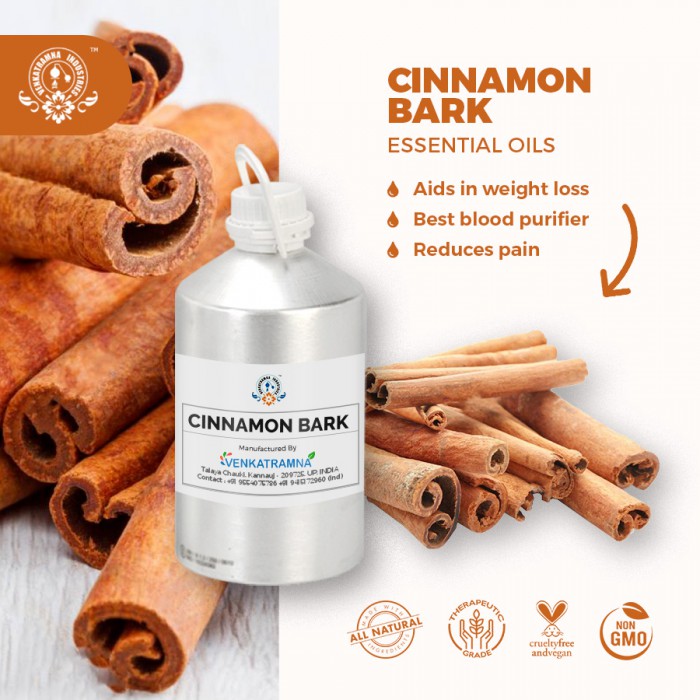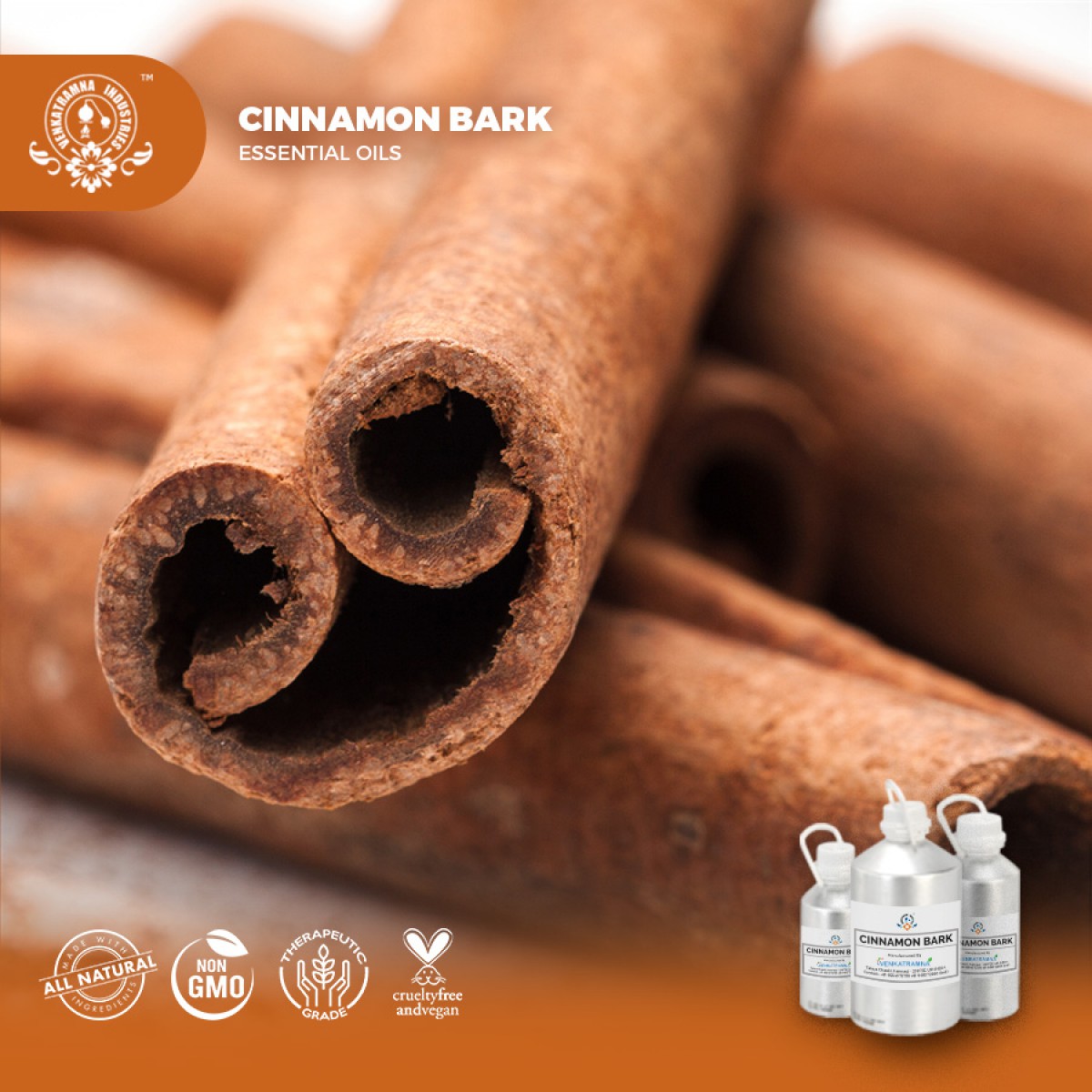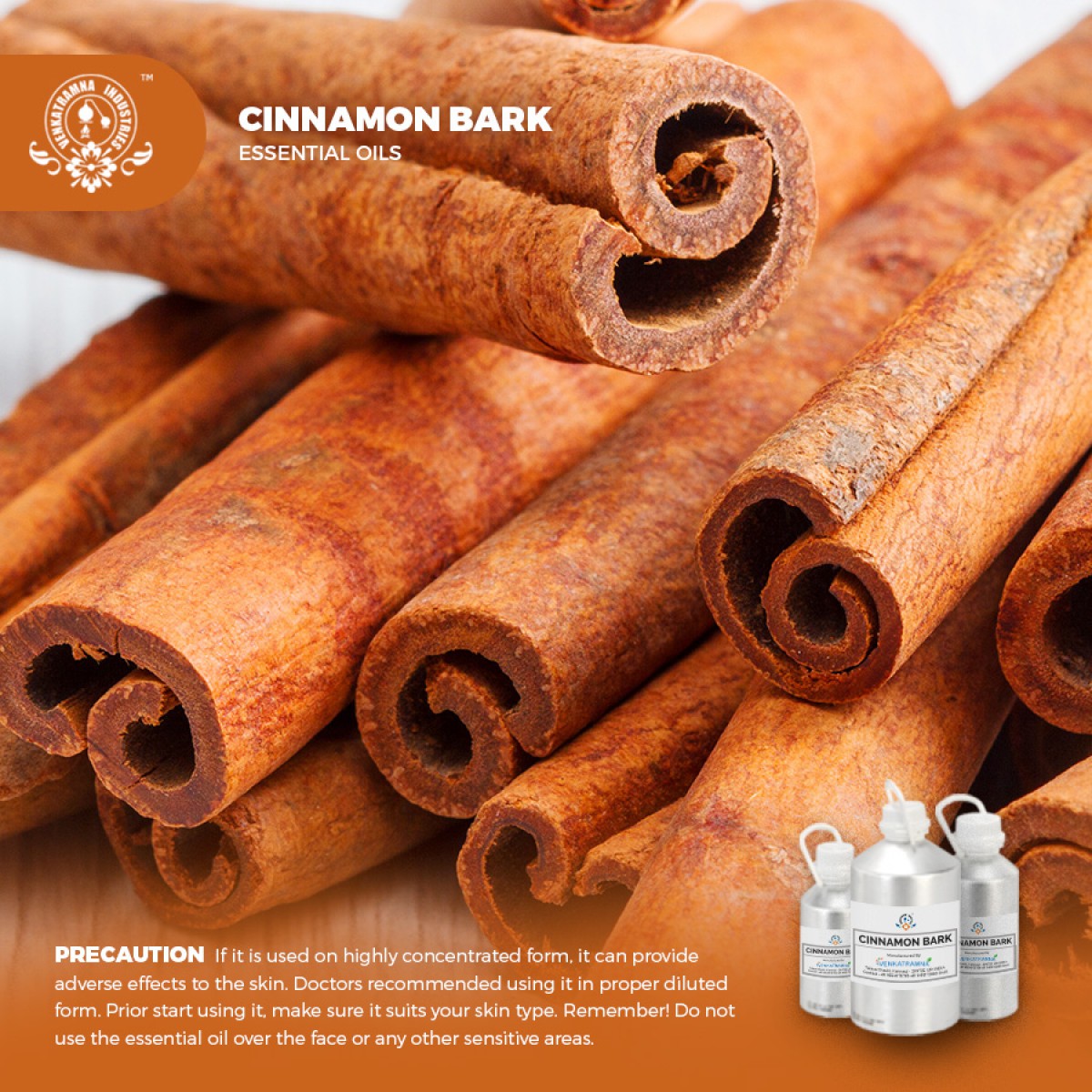Botanical Name : Cinnamon zeylanicum Common name: Cinnamon, Dalchini, Read More
|
Botanical Name : |
Cinnamon zeylanicum |
|
Common
name: |
Cinnamon, Dalchini, |
|
Plant family: |
Lauracae |
|
Genus: |
Cinnamomum |
|
Appearance/Color: |
A thin light yellowish brown color and a highly fragrant
odor. |
|
Odor: |
Oil secures a middle note in aroma. It has a unique fragrance
which reminds of the smell of apple sweet straw. |
|
Blends With: |
Blended well with cedarwood, frankincense, ylang-ylang,
lemon, lavender, neroli and orange to process a good mix of products. |
|
Origin |
Madagascar |
The
genus Cinnamomum (Laureaceae family) consists of 250 spices of trees
and shrubs distributed in south-east Asia, China, and Australia. It is a small,
evergreen tree, 10–15 m tall. The bark is widely employed as a spice, its
leaves are ovate-oblong in shape, and 7–18 cm long. The flowers, arranged
in panicles, have a greenish color and have a rather disagreeable odor. The
fruit is a purple 1 cm berry containing a single seed. It is found in
tropical rain forests, where it grows at various altitudes from highland slopes
to lowland forests and occurs in both marshy places and on well-drained soils.
However, in latitudes with seasonal climatic conditions, they become
exceedingly rare. There are two main varieties of cinnamon namely the Ceylon or
true cinnamon (Cinnamon zeylanicum) and cassia (Cinnamom aromaticum). C.
zeylanicum is native to Sri Lanka and tropical Asia and exotic to
several African countries, such as Comoros, Ghana, Madagascar, Mauritius,
Nigeria, Seychelles, Sierra Leone, Tanzania, and Uganda.
The most
important cinnamon oils in word trade are those from Cinnamomum zeylanicum, Cinnamomum
cassia, and Cinnamomum camphora. The cinnamon essential oil
composition varies depending on the geographical origin of the spice and the
processing conditions. Likewise, it has been detected slight differences
between the composition of volatile oils from buds, flowers, and fruits
from C. zeylanicum. Jayaprakasha et al. (2000) reported
that the oil from buds contains higher amounts of mono and sesquiterpenes, and
most characteristic compounds such as cinnamaldehyde are found in flowers and
fruits and in lower amounts in buds
The barks are commonly used in Cameroon as spices and for the treatment of cardiovascular diseases and cancers. Cinnamaldehyde (1; 75%) and camphor (56%) are the major compounds in oil and stem bark, respectively. Cinnamon extract inhibits the formation of toxic A? oligomers and prevents the toxicity of A? on neuronal PC12 cells. Oral administration of cinnamon extract induced to the reduction of plaques and improvement in cognitive behavior to aggressive Alzheimer's disease transgenic mice. The prevention or treatments of Alzheimer’s disease are mostly based on drugs inhibition of cholinesterase function or formation of amyloid plaque. Pathologies and dementias of the nervous system, such as Alzheimer’s disease and Parkinson’s disease (Lei et al., 2010) can result when tau proteins (tau proteins are proteins that stabilize microtubules) become defective and no longer stabilize microtubules properly. Chemicals able to prevent the tau aggregation may be a key factor in the development of new drugs.
DISCLAIMER
The complete range of conditions
or methods of use are beyond our control therefore we do not assume any
responsibility and expressly disclaim any liability for any use of this
product. Information contained herein is believed to be true and accurate however,
all statements or suggestions are made without warranty, expressed or implied,
regarding accuracy of the information, the hazards connected with the use of
the material or the results to be obtained from the use thereof. Compliance
with all applicable federal, state, and local laws and local regulations
remains the responsibility of the user.
The FDA has not evaluated the
statements on this website. No claims are made by Venkatramna Industries as to
the medicinal value of any products from vriaroma.com or by us. The information
presented here is for educating our customers about the traditional uses of
essential oils and is not intended to diagnose, treat, cure, or prevent any
disease. You are responsible for understanding the safe application of these products.
If you have any questions, please call or email us for further information.
As per NAHA guidelines, New Directions Aromatics
(NDA) does not recommend the ingestion of essential oils. It is imperative to
consult a medical practitioner before using Essential Oils for therapeutic
purposes. Pregnant and nursing women and those taking prescription drugs are
especially advised not to use this product without the medical advice of a
physician. The oil should always be stored in an area that is inaccessible to
children, especially those under the age of 7.
Cinnamon, the eternal tree of
tropical medicine, belongs to the Lauraceae family. Cinnamon is one of the most
important spices used daily by people all over the world. Cinnamon primarily
contains vital oils and other derivatives, such as cinnamaldehyde, cinnamic
acid, and cinnamate. In addition to being an antioxidant, anti-inflammatory,
antidiabetic, antimicrobial, anticancer, lipid-lowering, and
cardiovascular-disease-lowering compound, cinnamon has also been reported to
have activities against neurological disorders, such as Parkinson’s and
Alzheimer’s diseases. This review illustrates the pharmacological prospective
of cinnamon and its use in daily life.
Cinnamon Bark Essential Oil in
Pharma
The barks are commonly used in Cameroon as
spices and for the treatment of cardiovascular diseases and cancers. Cinnamaldehyde (1; 75%)
and camphor (56%) are the major compounds in oil and stem bark,
respectively. Cinnamon extract inhibits the formation of toxic
A? oligomers and prevents the toxicity of A? on neuronal PC12 cells.
Oral administration of cinnamon extract induced to the reduction of plaques and
improvement in cognitive behavior to aggressive Alzheimer's disease transgenic
mice. The prevention or treatments of Alzheimer’s disease are mostly based on
drugs inhibition of cholinesterase function or formation of amyloid plaque.
Pathologies and dementias of the nervous system, such as Alzheimer’s
disease and Parkinson’s disease (Lei et al., 2010) can result
when tau proteins (tau proteins are proteins that stabilize
microtubules) become defective and no longer stabilize microtubules properly.
Chemicals able to prevent the tau aggregation may be a key factor in the
development of new drugs.
Essence of Cinnamon Bark
Essential Oil
Essential oils
of cinnamon bark and leaf are widely used
in food flavours, cosmetics and pharmaceuticals. Cinnamon
is mainly used in the aroma and essence industries due to its fragrance, which
can be incorporated into different varieties of foodstuffs, perfumes, and
medicinal products. The Oil is rich in monoterpenoids and phenyl
propanoids. (E)-Cinnamaldehyde is the main component of cinnamon bark oil and
eugenol the main component of the leaf oil. Benzyl benzoate chemotypes of
cinnamon bark and leaf oils and linalool chemotype of cinnamon leaf oil were
also reported. Essential oils of other parts such as fruit, fruit stalk,
flower, bud, leaf petiole of cinnamon have also reported having medicinal and
pharmacological benefits.
COMMON USAGE
·
Stimulates brain function
·
Aids in weight loss
·
Best blood purifier
·
Reduces pain
·
Prevents and controls diabetes
·
Cures different types of infections
·
Possesses quick healing properties
·
Inhibits heart problems
·
Prevents colon cancer
·
Removes bad breath
·
Treats respiratory ailments
Ingredients:
|
S.No |
Key Constituents |
Strength (%) |
|
1 |
Eugenol |
2.0-13.3 |
|
2 |
(E)-cinnamyl acetate |
0.02-11.6 |
|
3 |
linalool |
01.2-6.0 |
|
4 |
(E)-cinnamaldehyde |
60.1-78.7 |
|
5 |
p-cymene |
1.6-2.4 |
|
6 |
b-caryophyllene |
1.3-5.8 |
|
7 |
benzaldehyde |
tr-3.2 |
|
8 |
1,8-cineole |
0.5-2.3 |
|
9 |
a-terpineol |
0.4-1.42 |
|
10 |
b-phellandrene |
<2.5 |
|
11 |
Terpinen-4-ol |
0.5-1.2 |
|
12 |
Camphor |
tr-1.3 |
|
13 |
Benzyl benzoate |
tr-01.0 |
|
14 |
Safrole |
0-0.05 |
|
15 |
a-caryophyllene |
0-01.0 |
TOXICOLOGICAL
INFORMATION
Safety Summary
·
Hazardous No Data
·
Contraindications Not Known
Organ Specific Effects
·
Skin corrosion / irritation: May cause an
allergic reaction by skin contact.
·
Serious eye damage / irritation: May have
reversible effects on the eyes, such as eye irritation which is totally
reversible by the end of observation at 21 days.
Systemic Effects
·
Acute Toxicity
o Oral
route:DL50 = 2650 mg/kg
o
Dermal route: DL50 > 5000 mg/kg
·
Respiratory sensitization: Not applicable under
normal use.
·
Germ cell mutagenicity: Cause for concern owing
to the possibility that it may induce heritable mutations in the germ cells of
humans.
·
Carcinogenicity: IARH: No component of this
product present at levels greater than or equal to 0.1% is identified as
probable, possible or confirmed human carcinogen by IARC. ACGIH: No component
of this product present at levels greater than or equal to 0.1% is identified
as probable, possible or confirmed human carcinogen by IARC.
·
NTP: No component of this product present at
levels greater than or equal to 0.1% is identified as probable, possible or
confirmed human carcinogen by IARC.
·
OSHA: No component of this product present at
levels greater than or equal to 0.1% is identified as probable, possible or
confirmed human carcinogen by IARC.
·
Reproductive toxicity: Not specified
·
STOT-single exposure: Not specified
·
STOT-related exposure: Not specified
·
Aspiration hazard: Not specified
ECOLOGICAL
INFORMATION
·
Toxicity
Harmful to aquatic life with long lasting effects. The product must not be
allowed to run into drains or waterways.
·
Substances classified as category 1 Acute
toxicity
·
Crustacean toxicity: Duration of exposure :
48 h CE50 = 1.61 mg/l Species: Daphnia sp. OECD Guideline 202 (Daphnia sp. Acute Immobilisation Test)
·
Persistence and degradability Biodegradation is
expected
·
Bio-accumulative potential Bioaccumulation is
unlikely
·
Mobility in soil Unknown





 MSDS-Cinnamon_Bark.pdf
MSDS-Cinnamon_Bark.pdf




